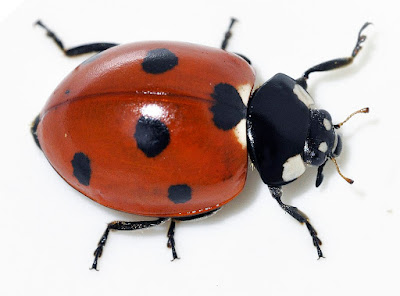Ladybug, ladybug, fly away home, Your house is on fire, your children all roam. Except little Nan, who sits in a pan, Weaving gold laces as fast as she can.
Now, let's talk about ladybugs in general:
Ladybugs, also known as ladybirds or lady beetles, are small, colorful beetles belonging to the family Coccinellidae. They are widely recognized for their distinctive round shape and vibrant coloration, often featuring a combination of red, orange, or yellow hues with black spots. Ladybugs are found throughout the world, and there are over 6,000 species known to exist.
Here are some interesting facts about ladybugs:
Symbolism: Ladybugs are often considered a symbol of good luck and protection in many cultures. Finding a ladybug is believed to bring good fortune, and they are thought to bring blessings to gardens and crops.
Defense Mechanisms: Ladybugs have several defense mechanisms to protect themselves. When threatened, they can release a yellowish liquid from their joints, which has a foul odor and can deter predators. Some species also have bright, contrasting colors to warn potential predators of their bitter taste or toxicity.
Diet: Ladybugs are voracious predators and are highly beneficial to gardens and agriculture. They primarily feed on plant pests such as aphids, mites, and scale insects. A single ladybug can consume hundreds of aphids in a day, making them valuable allies in natural pest control.
Lifecycle: Ladybugs undergo complete metamorphosis, just like butterflies. They start as eggs, which are usually yellow or orange and laid on the undersides of leaves near prey sources. After hatching, the larvae emerge and go through several stages before reaching the pupal stage. Finally, they transform into adult ladybugs.
Hibernation: Ladybugs often seek shelter during the colder months. They gather in large groups, often in clusters, and hibernate in protected spots like leaf litter, tree bark, or rock crevices until the weather becomes warm again.
Variations: Ladybugs come in a variety of colors and patterns, depending on the species. While the most common coloration is red with black spots, some ladybugs may be black with red spots, or they may have no spots at all.
Ladybugs are cherished by gardeners and nature enthusiasts alike for their aesthetic beauty and ecological benefits. Their presence in gardens helps to keep pest populations in check and promotes a healthy balance in ecosystems.


No comments:
Post a Comment